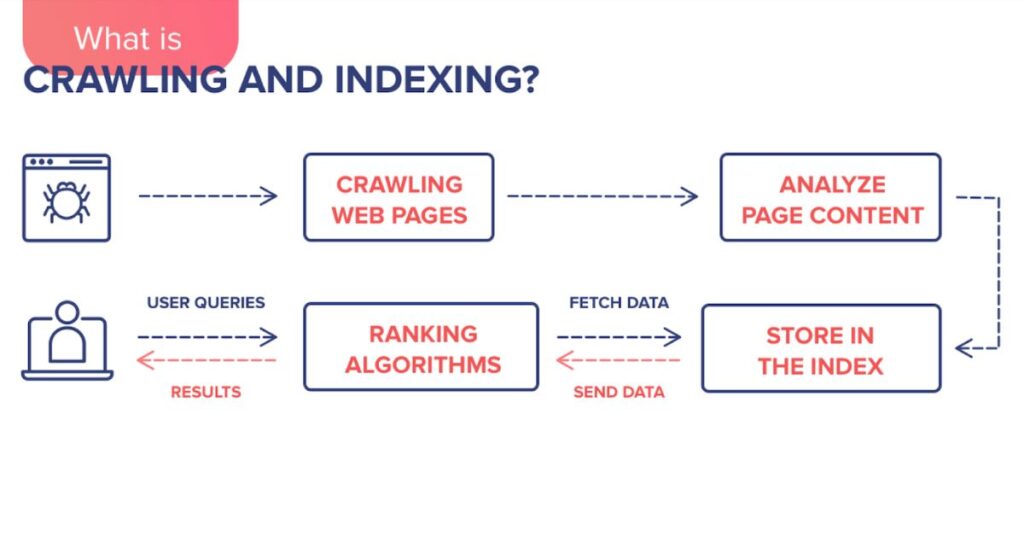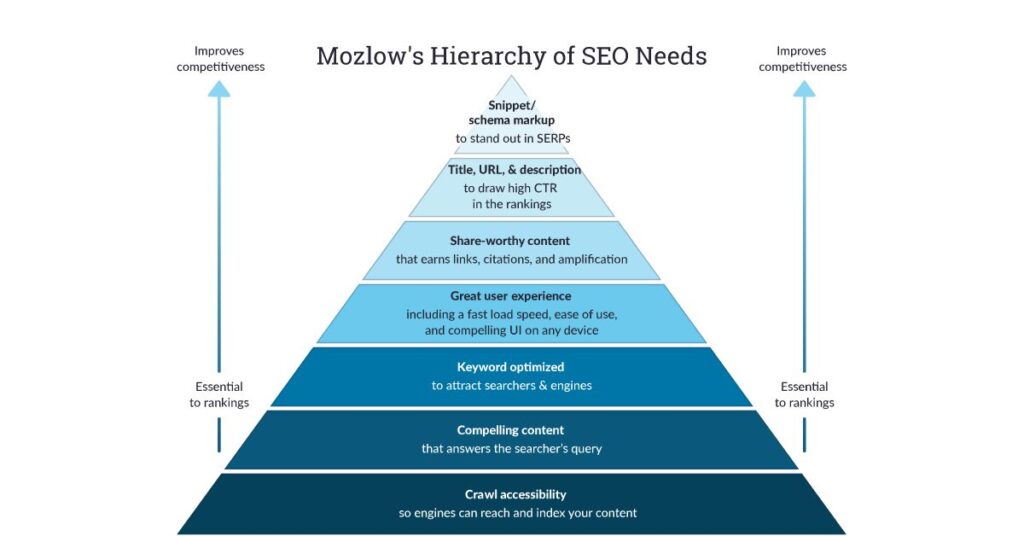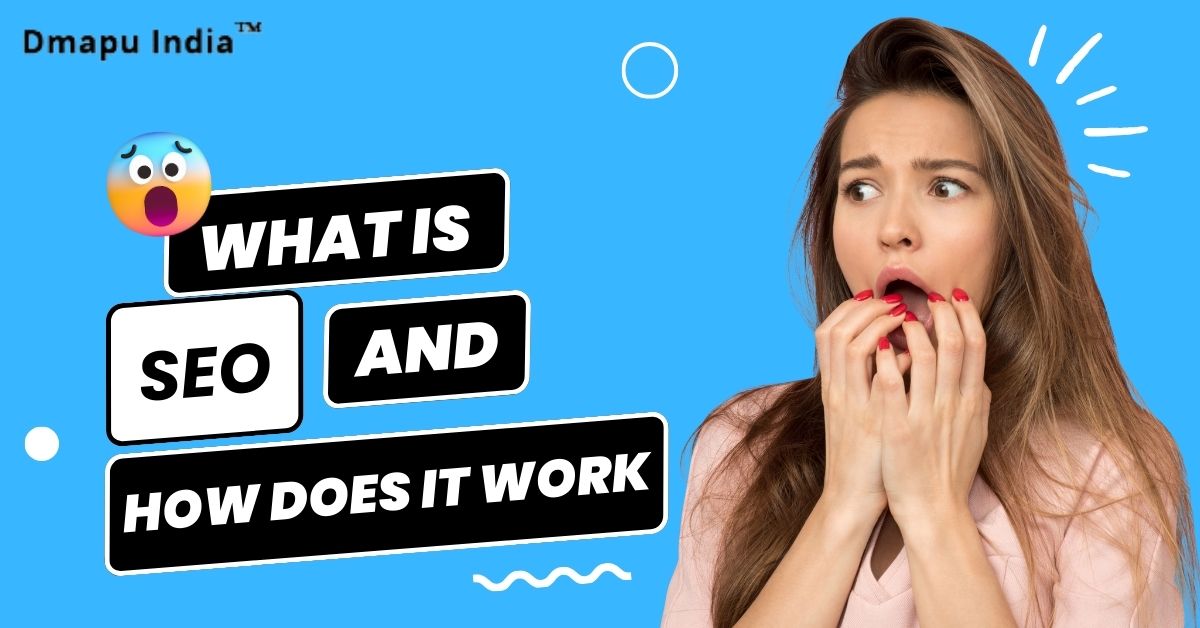SEO (Search Engine Optimization) is improving the quality and quantity of traffic to a website or web page from search engines. SEO targets unpaid traffic (known as “natural” or “organic” results) rather than direct traffic or paid traffic. Different types of unpaid traffic may come from image, video, academic, news, and industry-specific vertical search engines.
Search engine optimization is the product of search engine companies; they develop ranking factors and use them to determine the most relevant content for searchers. Before a search engine can choose the most relevant content, it must crawl and index it.
- Crawling: Search engines use crawling to discover and re-discover newly created and existing web pages. Spiders – also known as crawlers – use links to discover and re-discover content, which is why internal linking and backlinking are so significant.
- Indexing: Search engines index content from the internet and then display it in search results. The indexing process occurs after the crawling process. Search engines index most pages, but they rarely index spammy, blocked, or duplicate pages.
Search Engine Optimization analyzes pages against their ranking factors after crawling and indexing, such as:

- Speed
- Backlink profile
- Keyword usage
- Mobile-friendliness
- And more
It is important to keep in mind that search engines do not publish their ranking factors.
You may be able to start bringing free and relevant traffic to your website based on the search engine’s analysis of your content.
The difference between organic and paid search is as follows:

A major difference between organic search and paid search is that organic search is free, while paid search is a paid service.
When you perform a search engine query, the results will display both paid and organic listings. Paid listings will be labeled with the word “Ad.” Advertisers pay for clicks on paid listings. A website owner won’t pay if you click on an organic listing.
Read Also: What is Blogging Marketing? and its Best Benefits in 2022
The types of search engine optimization are as follows:
There are two types of SEO tactics:
- On-page: All on-page search engine optimization strategies take place on your website.
- Off-page: All off-page search engine optimization strategies happen off your website.
On-page, off-page, and technical SEO all work together to make your site more friendly to users and search engines. You’ll rank better for different searches when search engine crawlers see how friendly your site is to them.
Which types of search engine optimization strategies are available?
- White-hat optimization is optimizing your site using best practices and user-focused tactics. For example, a white-hat SEO strategy might include producing helpful content, improving page speed, and incorporating keywords naturally.
- Black-hat optimization When you optimize your site with disapproved or spammy tactics, like buying backlinks, copying content from other sites, and stuffing keywords, it’s called a “black-hat” SEO strategy.
- Technical Search Engine Optimization: All technical SEO happens on the backend of your website.
It is recommended that you invest in a white-hat optimization strategy if you wish to make SEO work for your business on a long-term basis. Even though black-hat optimization is likely to produce quick results, it will eventually result in penalties against your site, such as decreases in rankings or removal from Google’s index.
Read Also: How to Start a Career in Digital Marketing?
How to make Search Engine Optimization Work for You
Now you know how Search Engine Optimization works. What can you do to make SEO marketing work for your business? Working for you means increasing your company’s rankings, traffic, and revenue online. You can start with these resources, which we’ve organized by SEO element. Check them out!
Keyword research
The importance of keyword research to Search Engine Optimization lies in the fact that keywords signal to search engines a page’s topic. Because of this, keywords are often included in title tags, header tags, and throughout the content. It is important, however, to learn how to conduct keyword research and integrate it into your content.
- What Are Keywords for SEO?
- SEO Keyword Research Guide
- How to Do Keyword Research
- How to Find Related Keywords
- What Are the Best Keywords for SEO?
- What Is Keyword Density in SEO?
- Best SEO Keyword Research Tools
- [Tool] KeywordsFX: Free Keyword Suggestion Tool
Header tags
The header tags, which include title tags, meta descriptions, and more, are also important for SEO. Learn how to create Search Engine Optimization– and user-friendly header tags that showcase the relevance and usefulness of your content.
Start here:
- How to Use Meta Tags for SEO [Guide]
- What Are Header Tags?
- What Is a Title Tag?
- How to Write a Title Tag
- What Is a Meta Description?
- How to Write a Meta Description?
Web design and development
Search engine optimization works on-page, off-page, and technically. The design of a website plays a large role in technical SEO and requires collaboration with developers and designers. Because of this, it’s important to educate yourself on SEO best practices so you can inform designers and developers.

| Facebook Page | Click Here |
| Click Here | |
| Website | Click Here |



